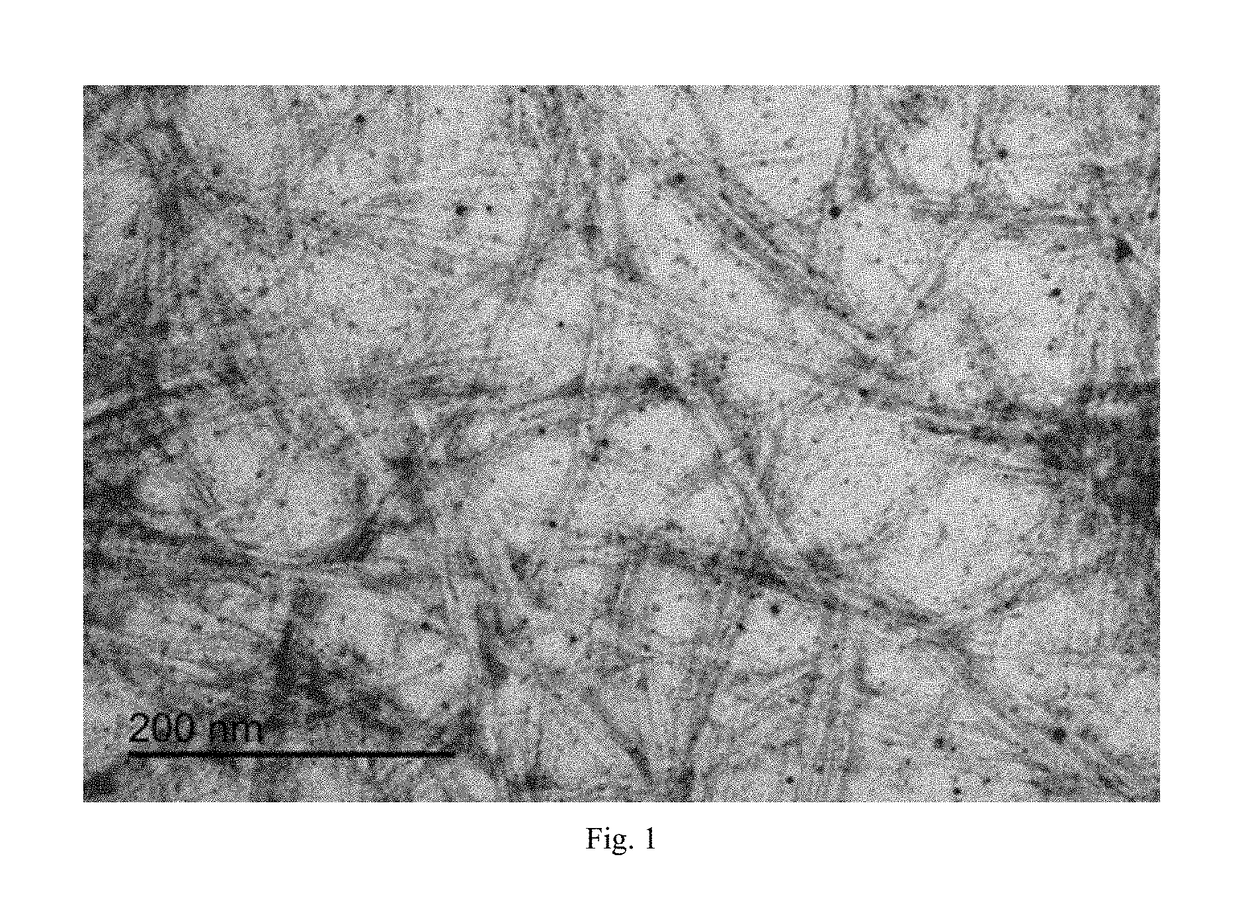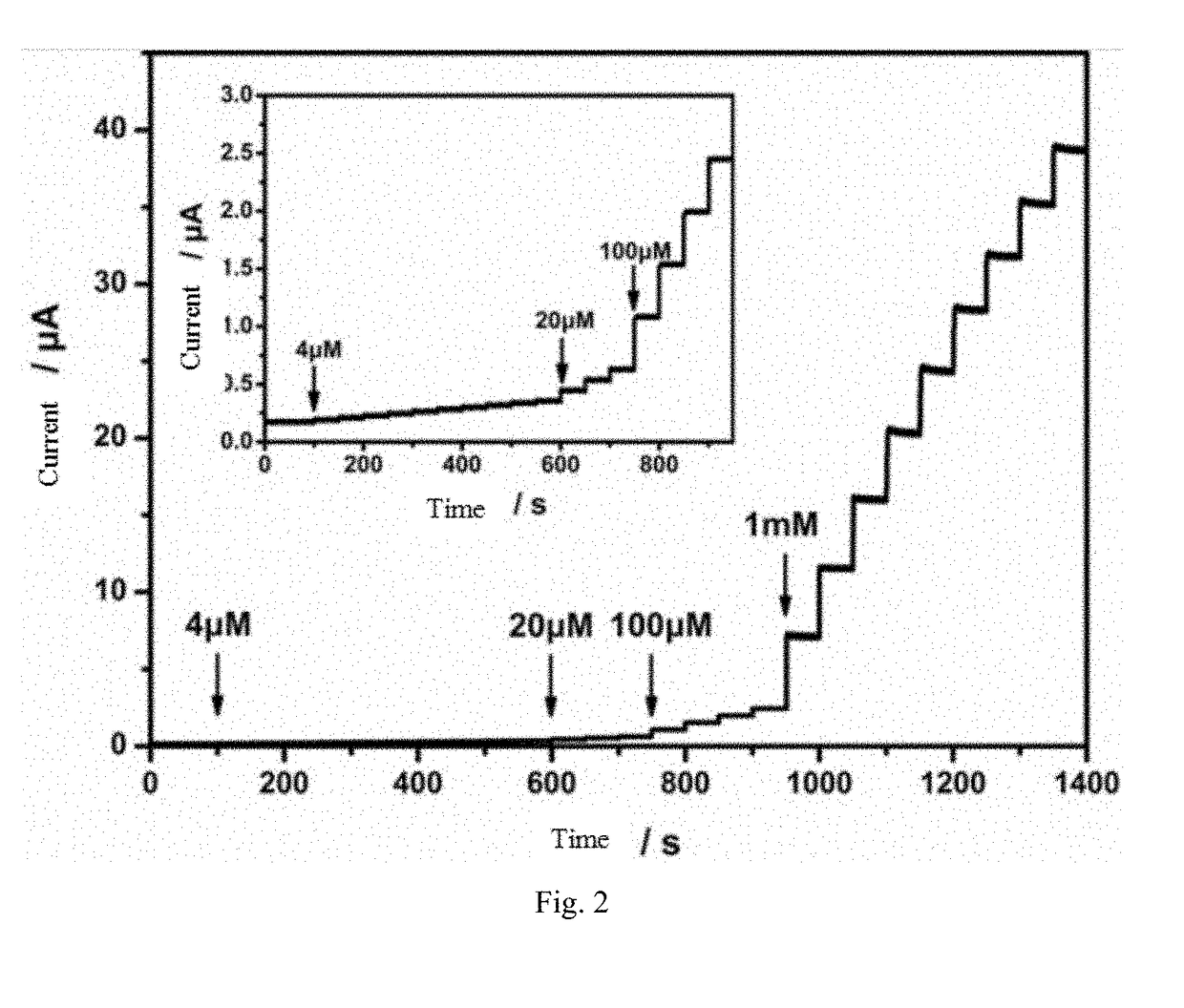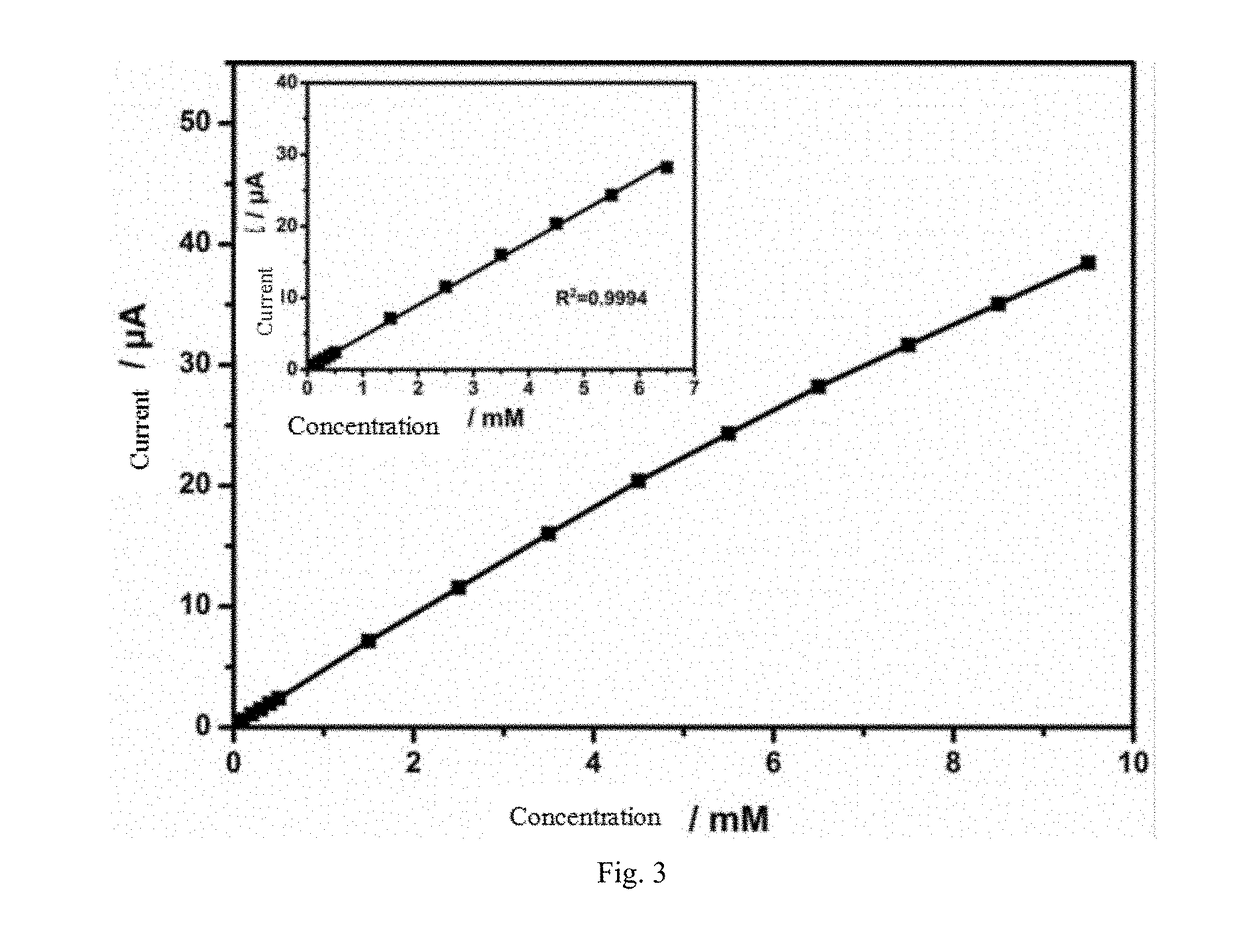Metal Nanoparticles/Nanocellulose Composites-Based Non-Enzymatic Electrochemical glucose sensor and Preparation Method Thereof
a non-enzymatic, glucose sensor technology, applied in the field of electrochemical sensors, can solve the problems of low stability, labor-intensive and time-consuming, disadvantages of existing detection methods, etc., and achieve the effects of enhancing the sensitivity and selectivity of glucose sensing, excellent biocompatibility, and low pri
- Summary
- Abstract
- Description
- Claims
- Application Information
AI Technical Summary
Benefits of technology
Problems solved by technology
Method used
Image
Examples
embodiment 1
[0031]A metal nanoparticles / nanocellulose composites-based non-enzymatic electrochemical glucose sensor was composed of a three-electrode system consisting of a glassy carbon electrode, a platinum wire and a Ag / AgCl electrode. The surface of the glassy carbon electrode was coated with the metal nanoparticles / nanocellulose composites. The rod-shaped nanocellulose was negatively charged by modifying with poly (diallyldimethylammonium chloride) (PDDA), with the length of 150-200 nm and the diameter of 10-20 nm. The metal nanoparticles in the composites is Au nanoparticles, with the particle size distribution range of 2.6-4.9 nm, and the average particle size of 3.75 nm. The loading capacity of Au nanoparticles was 5%.
[0032]The preparation method comprises:
[0033](1) adding 5 g microcrystalline cellulose into 350 ml of 1 mol / l ammonium persulfate solution, and stirring for 16 hours under 60° C. at a stirring speed of 600 r / min; placing the suspensions in a dialysis tubing to dialyze unti...
embodiment 2
[0038]A metal nanoparticles / nanocellulose composites-based non-enzymatic electrochemical glucose sensor was composed of a three-electrode system consisting of a glassy carbon electrode, a platinum wire and a Ag / AgCl electrode. The surface of the glassy carbon electrode was coated with the metal nanoparticles / nanocellulose composites. The rod-shaped nanocellulose was negatively charged by modifying with poly (diallyldimethylammonium chloride) (PDDA), with the length of 150-200 nm and the diameter of 10-20 nm. The metal nanoparticles in the composites is Pt nanoparticles, with the particle size distribution range of 3.8-9.7 nm, and the average particle size of 6.1 nm. The loading capacity of Pt nanoparticles was 10%.
[0039]The preparation method comprises:
[0040](1) adding 5 g microcrystalline cellulose into 400 ml of 1 mol / l ammonium persulfate solution, and stirring for 6 hours under 70° C. at a stirring speed of 600 r / min; placing the suspensions in a dialysis tubing to dialyze until...
embodiment 3
[0044]A metal nanoparticles / nanocellulose composites-based non-enzymatic electrochemical glucose sensor was composed of a three-electrode system consisting of a glassy carbon electrode, a platinum wire and a Ag / AgCl electrode. The surface of the glassy carbon electrode was coated with the metal nanoparticles / nanocellulose composites. The rod-shaped nanocellulose was negatively charged by modifying with poly (diallyldimethylammonium chloride) (PDDA), with the length of 150-200 nm and the diameter of 10-20 nm. The metal nanoparticles in the composites is Au nanoparticles, with the particle size distribution range of 2.2-3.9 nm, and the average particle size of 2.9 nm. The loading capacity of Pt nanoparticles was 1%.
[0045]For the preparation method, the differences with embodiment 1 are 300 ml of 1 mol / l ammonium persulfate solution in step (1), 2.5 g of 20 wt % PDDA, 2.5 g of sodium chloride, and continually stirring for 12 hours in step (2), 1.01 ml of 1 mgAu / mL chloroauric acid solu...
PUM
| Property | Measurement | Unit |
|---|---|---|
| particle size | aaaaa | aaaaa |
| diameter | aaaaa | aaaaa |
| length | aaaaa | aaaaa |
Abstract
Description
Claims
Application Information
 Login to View More
Login to View More - R&D
- Intellectual Property
- Life Sciences
- Materials
- Tech Scout
- Unparalleled Data Quality
- Higher Quality Content
- 60% Fewer Hallucinations
Browse by: Latest US Patents, China's latest patents, Technical Efficacy Thesaurus, Application Domain, Technology Topic, Popular Technical Reports.
© 2025 PatSnap. All rights reserved.Legal|Privacy policy|Modern Slavery Act Transparency Statement|Sitemap|About US| Contact US: help@patsnap.com



